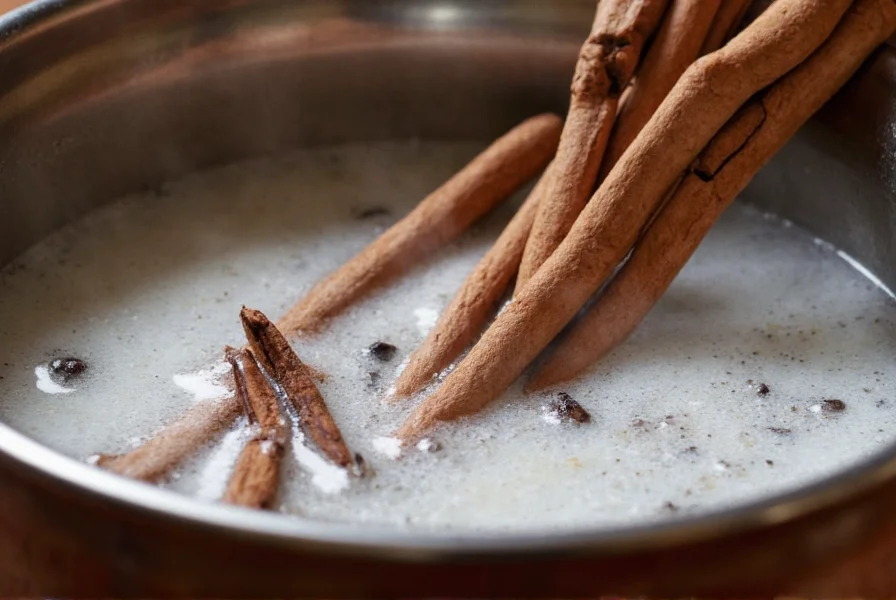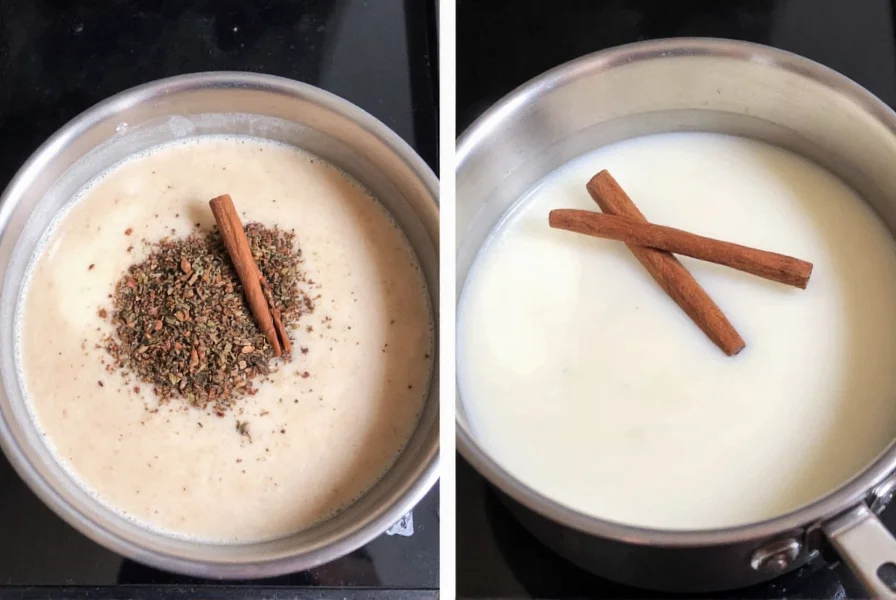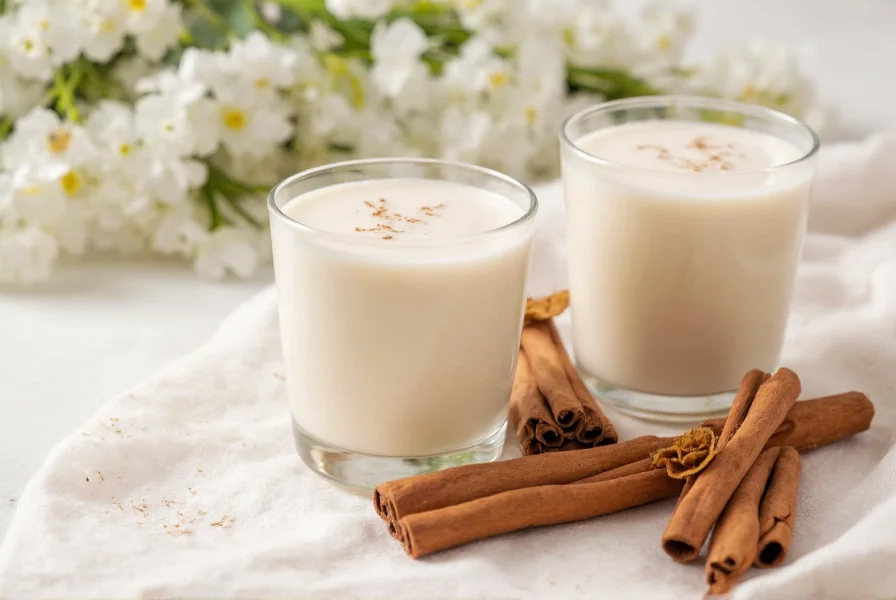Many home beverage enthusiasts encounter confusion between tea terminology and spice preparation methods. The phrase "loose leaf cinnamon" creates a terminology conflict since "loose leaf" specifically describes tea processing, not spice forms. Understanding this distinction helps create authentic spiced milk beverages.
Understanding Beverage Terminology
Tea terminology and spice preparation follow separate conventions that shouldn't be conflated. Let's clarify these essential distinctions:
| Term | Correct Application | Common Misuse |
|---|---|---|
| Loose leaf | Whole tea leaves sold unpackaged | Incorrectly applied to spices like cinnamon |
| Cinnamon sticks | Whole cinnamon bark rolled into quills | Called "loose leaf cinnamon" (non-standard) |
| Spiced milk | Milk infused with whole spices | Misidentified as "cinnamon milk" without context |
Authentic Spiced Milk Beverages
The beverage you're likely seeking belongs to the global family of spiced milk drinks. These traditional preparations use whole spices simmered in milk, not "loose leaf" terminology which applies only to tea.

Masala Chai: The Closest Match
Masala chai represents the authentic preparation combining elements from your query. This Indian specialty uses:
- Loose leaf black tea (typically Assam)
- Cinnamon sticks (not powder for proper infusion)
- Fresh ginger and other whole spices
- Milk and sweetener
The traditional preparation method involves simmering whole spices in water first, then adding tea leaves and milk. This technique properly extracts flavors without creating bitterness.
How to Prepare Proper Cinnamon Milk Beverage
For an authentic experience that matches your search intent, follow this professional preparation method:
- Simmer 1-2 cinnamon sticks in 1 cup water for 5 minutes
- Add 1 teaspoon loose leaf black tea and steep 3 minutes
- Pour in 1 cup whole milk and heat to just below boiling
- Strain into cup, add sweetener to taste
- For dairy-free option, use full-fat coconut milk

Avoiding Common Preparation Mistakes
Many home attempts at cinnamon milk beverages fail due to these common errors:
- Using cinnamon powder instead of sticks - Powder creates sediment and uneven flavor
- Boiling milk with tea leaves - Causes bitterness and curdling
- Incorrect spice ratios - Overpowering cinnamon masks other flavors
- Using low-fat milk - Fat content carries spice flavors effectively
For optimal results, maintain a 2:1 milk-to-water ratio and use fresh, high-quality cinnamon sticks. Ceylon cinnamon offers a more delicate flavor than Cassia varieties, which can dominate the beverage.
Health Considerations and Benefits
When prepared correctly, this spiced milk beverage offers several potential health benefits:
- Cinnamon may help regulate blood sugar levels
- Black tea provides antioxidants like theaflavins
- Warm milk promotes relaxation and better sleep
- Spice combinations support digestion
However, consume in moderation as excessive cinnamon intake (particularly Cassia variety) may cause issues for those with liver conditions. One serving daily represents a safe consumption level for most adults.
Traditional Variations Across Cultures
Similar spiced milk preparations exist worldwide, each with regional variations:
- India: Masala chai with cardamom, ginger, and black pepper
- Mexico: Champurrado with chocolate and cinnamon
- Middle East: Qahwa with cardamom and saffron
- Thailand: Cha Yen with condensed milk and spices
These global variations demonstrate how cultures adapt the basic concept of spiced milk to local tastes and available ingredients while maintaining the core preparation method of simmering whole spices.
What's the difference between cinnamon sticks and 'loose leaf cinnamon'?
"Loose leaf" specifically refers to tea processing terminology and doesn't apply to cinnamon. Cinnamon comes as whole sticks (quills) or ground powder. The term "loose leaf cinnamon" is incorrect - you're looking for cinnamon sticks for proper infusion in milk beverages.
Can I use cinnamon powder instead of sticks for spiced milk?
While possible, cinnamon powder creates sediment and uneven flavor distribution. Sticks provide gradual flavor release during simmering and can be removed before serving. If using powder, add 1/4 teaspoon at the end of preparation to prevent bitterness.
How long should I simmer cinnamon in milk for best flavor?
Simmer cinnamon sticks in water for 5 minutes before adding milk. After adding milk, heat to just below boiling (180°F/82°C) and remove from heat. Total steeping time should be 8-10 minutes. Longer simmering creates bitter compounds and may curdle the milk.
What's the best tea to use with cinnamon milk?
Strong black teas like Assam or Ceylon work best as they stand up to spices and milk. Avoid delicate teas like green or white tea, which become bitter when combined with milk and spices. Use 1 teaspoon loose leaf tea per serving for proper strength without overpowering the cinnamon.
Can I make dairy-free cinnamon milk with loose leaf tea?
Yes, use full-fat coconut milk for best results as its fat content carries spice flavors effectively. Almond or oat milk work but produce lighter flavor. Simmer spices in water first, then add your plant-based milk and tea. Avoid boiling plant milks to prevent separation.











 浙公网安备
33010002000092号
浙公网安备
33010002000092号 浙B2-20120091-4
浙B2-20120091-4